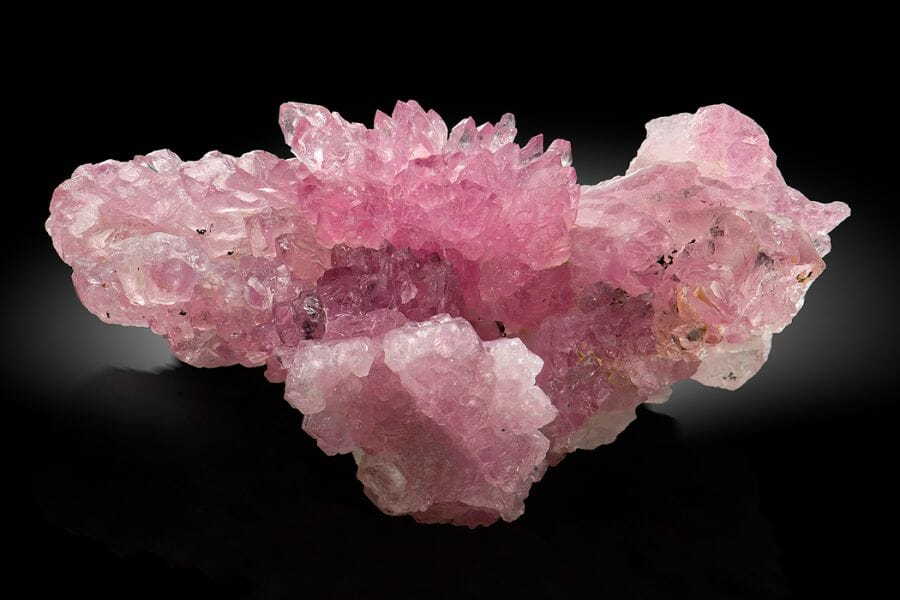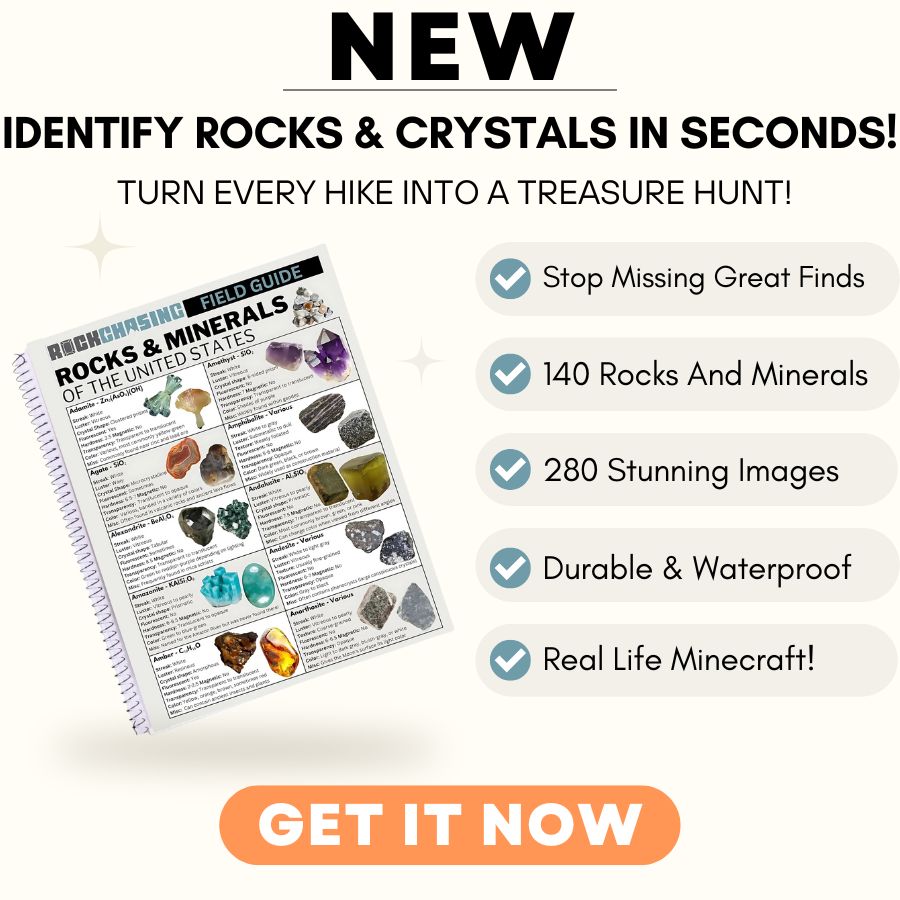Finding crystals can be a rewarding adventure, offering a unique way to explore the natural beauty and geology of the region. Whether you’re a seasoned rockhound or just getting started, knowing where to look is key to uncovering these hidden treasures.
In this state, a variety of locations provide opportunities to discover different types of crystals. From rocky outcrops in the mountains to stream beds that carry sparkling surprises, each area offers its own unique finds for those willing to search.
We can help you get started with some places you can explore for crystals below!
Crystals you can find in the US
The United States offers a wide range of crystals that reflect its diverse geology. From vibrant gems to more subtle mineral formations, there’s something to discover in nearly every region.
Calcite
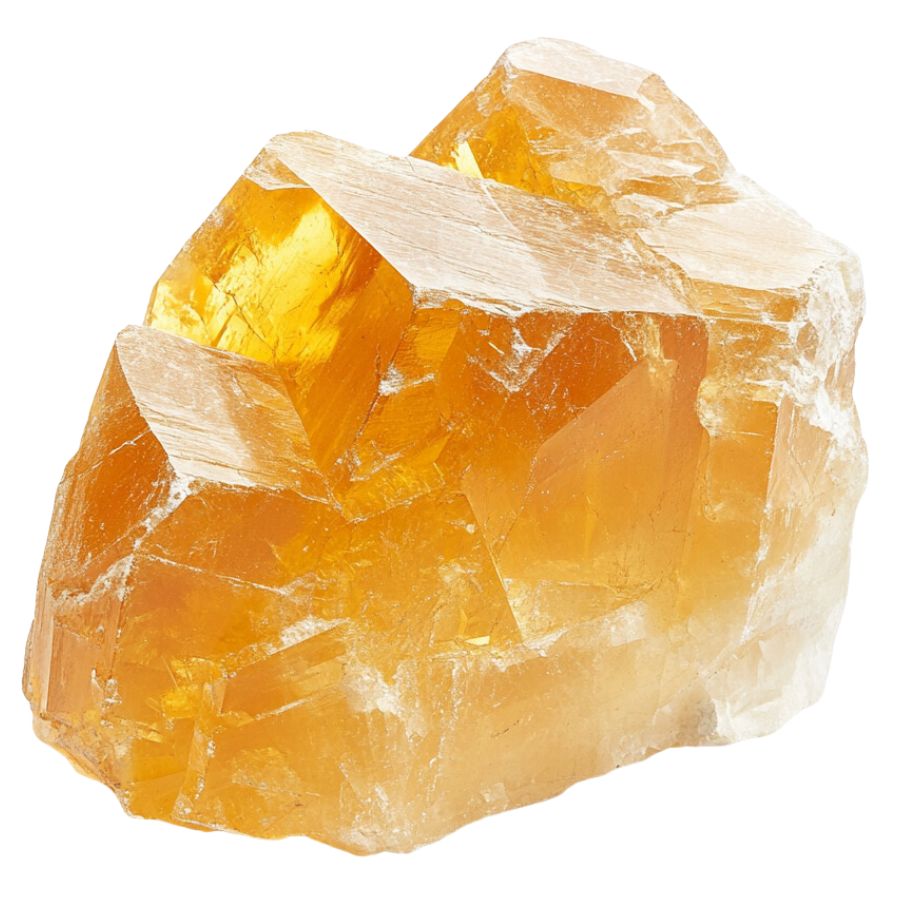
With a variety of forms and a unique property of double refraction, calcite allows objects viewed through the crystal to appear doubled. This mineral can appear in a spectrum of colors, with pure forms typically being transparent or white.
In addition, calcite reacts vigorously with acids, which aids in distinguishing it from other minerals. It also frequently contributes to the structure of sedimentary rocks such as limestone.
Gypsum
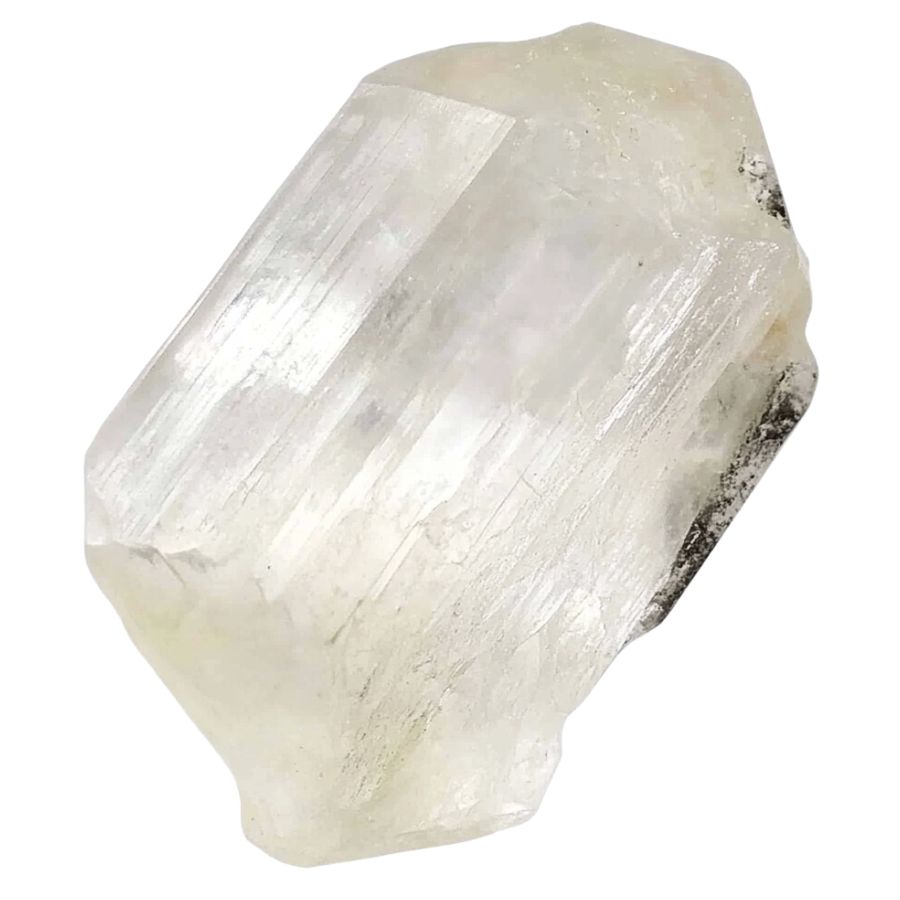
Gypsum’s notable softness allows it to be easily scratched with just a fingernail, often presenting as white or very light-colored in its pure form.
It manifests in both crystalline forms, like selenite, and massive forms such as alabaster, making it versatile in use and appearance.
Gypsum is also essential in the construction industry and is a key component in the manufacture of plaster and drywall.
Fluorite
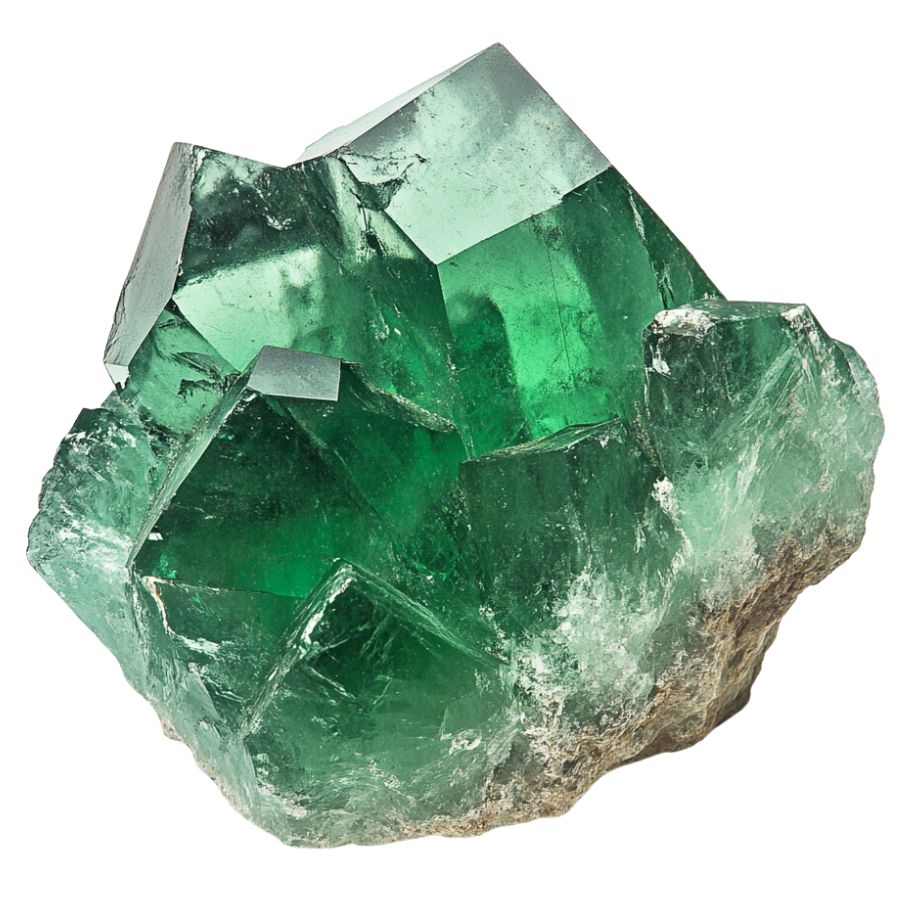
Fluorite comes in a wide range of vibrant colors, including purples, greens, blues, and yellows, and is known for forming in well-defined cubic crystals.
Beyond this, fluorite exhibits fluorescence under ultraviolet light! It can also be used in various industrial applications, including as a flux in steelmaking.
Galena
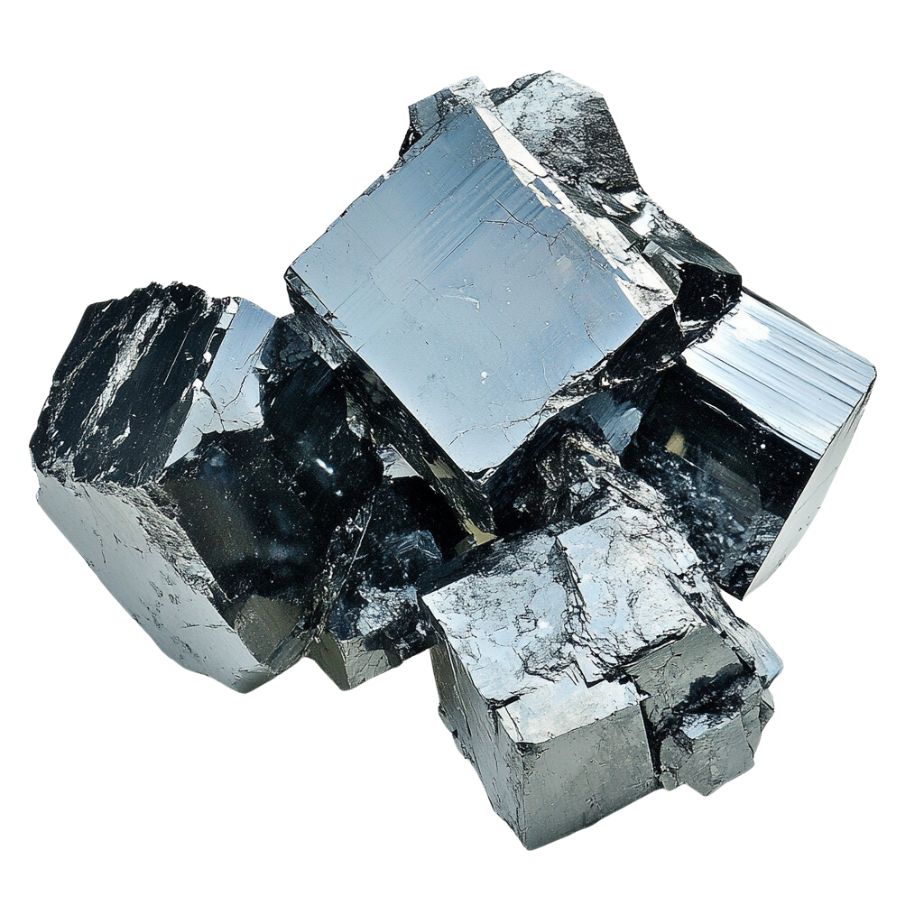
Galena distinguishes itself with a metallic luster and high density, typically found in a cube-like form. It serves as the primary ore of lead, making it important in the metal industry, while its shiny, silver color attracts collectors.
Not only does its appearance make it a subject of interest, but its weight and texture provide tangible lessons in mineral density and metallic properties. Galena also often contains traces of silver, adding to its commercial and educational value.
Corundum
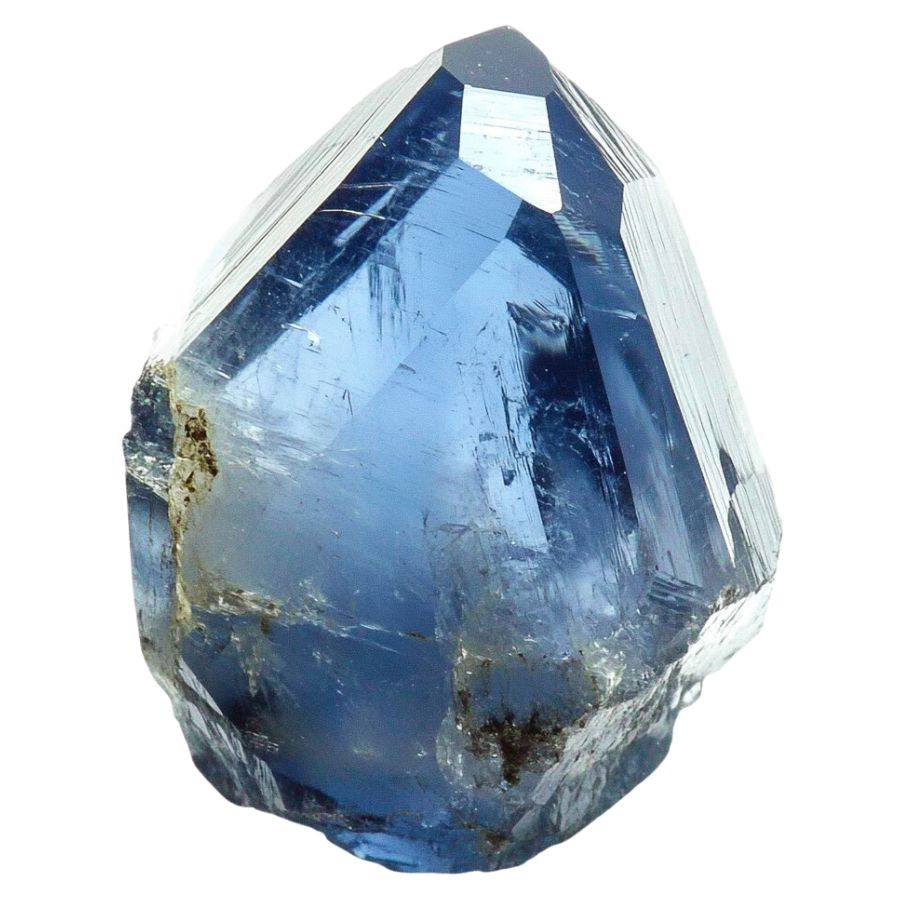
Corundum is a mineral that comes in a variety of colors, though it is typically transparent or gray. Its most famous forms are sapphires and rubies, which are prized for their vibrant blue and red hues.
The mineral is known for its remarkable hardness, ranking just below diamond on the Mohs scale. This durability makes corundum ideal for industrial abrasives and cutting tools, as well as a popular choice for fine jewelry.
Quartz
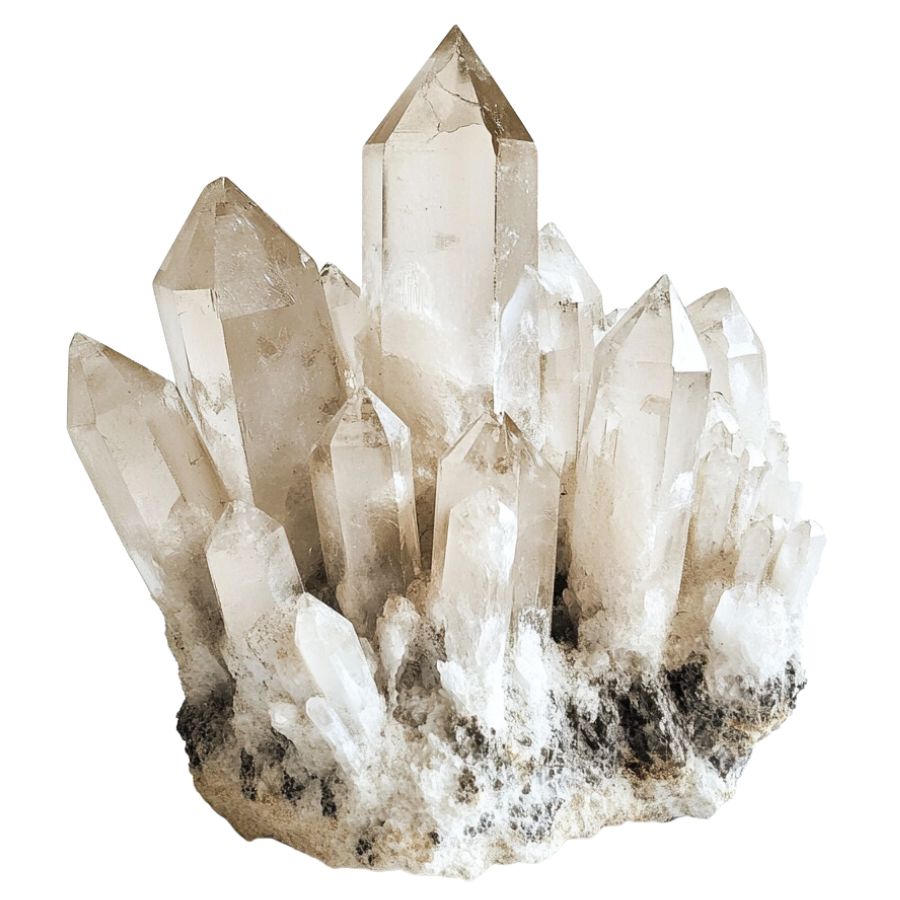
Quartz is among the most common minerals in the Earth’s crust and is prized for its durability and variety. It forms in a wide range of colors and types, from clear rock crystal to purple amethyst.
The mineral is notable for its hardness and durability, which contribute to its use in a variety of applications. Quartz is also popular in the manufacturing of electronics and watches due to its piezoelectric properties, which allow it to convert mechanical pressure into electrical energy.
Pyrite
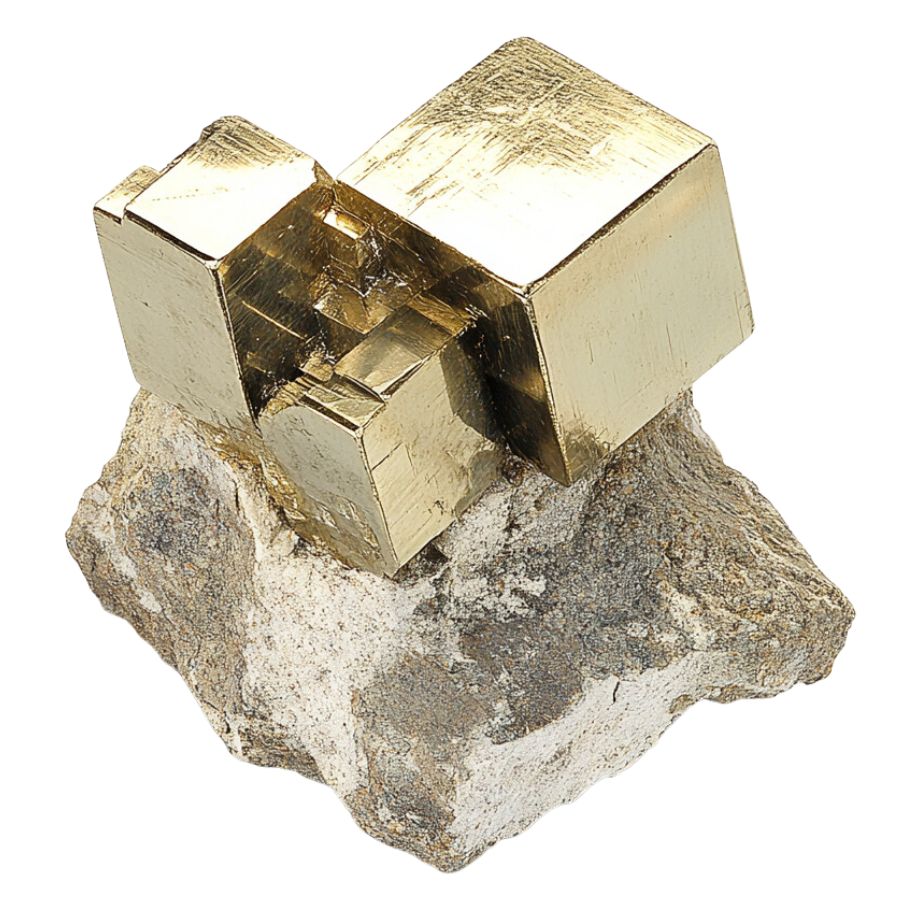
Often mistaken for gold due to its metallic luster and pale brass-yellow hue, pyrite is known colloquially as “fool’s gold.” Its characteristic cube-shaped crystal formations look man-made but are actually completely naturally formed!
Pyrite also has historical importance in producing sulfur dioxide for sulfuric acid production.
Rhodochrosite
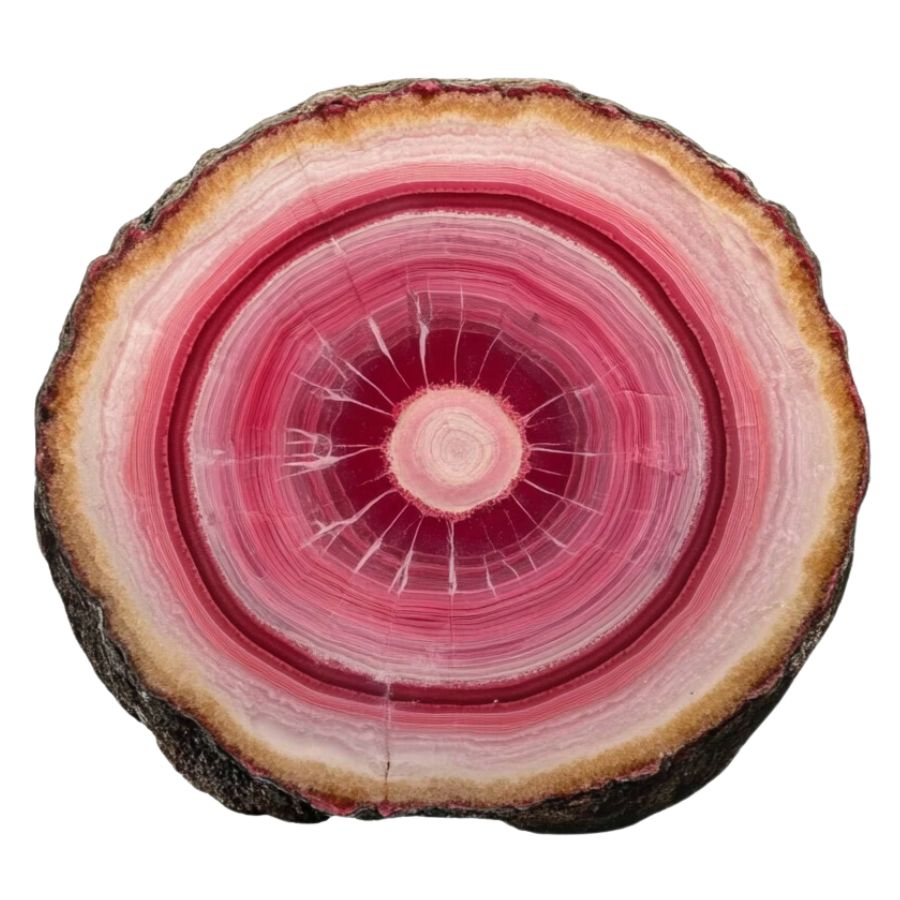
Rhodochrosite stands out with its rich pink and red hues, making it highly desirable as both a mineral specimen and a gemstone.
It typically forms in layered or stalactitic structures, with bands of colors that showcase how it grew over millions of years.
Beyond its beauty, rhodochrosite is significant as the main source of manganese, an essential element used in metal alloys.
Rhodonite
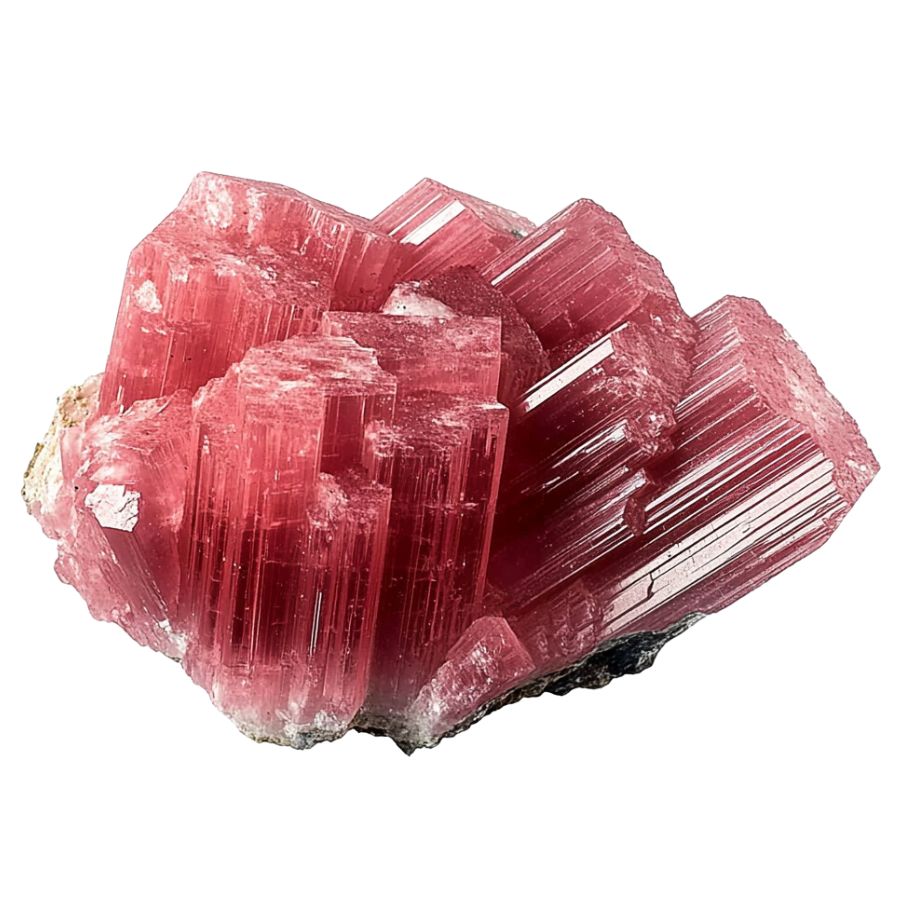
Appreciated for its deep pinks and reds, often complemented by black manganese oxide veins, rhodonite presents a dramatic appearance. It is typically found in metamorphic rocks and is used both as an ornamental stone and in jewelry.
In geology, rhodonite is significant for its role in metamorphic processes and its association with other manganese-rich minerals. It can be found in metamorphosed sedimentary rocks and is sometimes used as an indicator of the presence of manganese deposits.
Vivianite
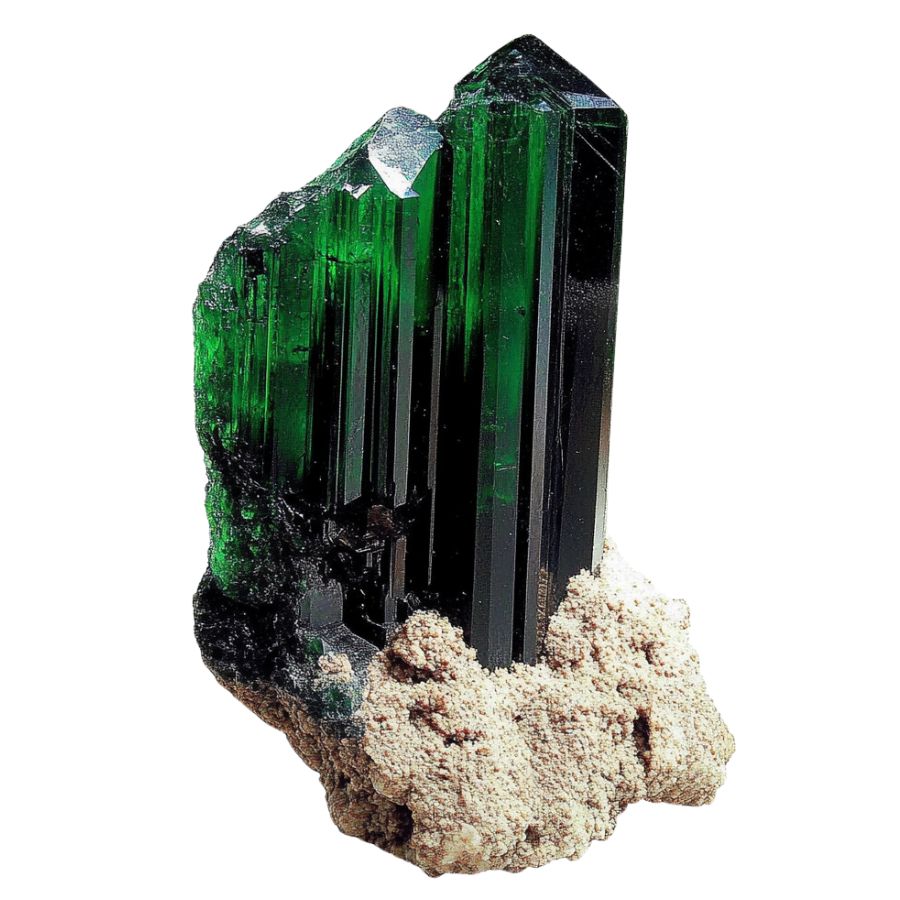
Vivianite, an iron phosphate mineral, emerges in low-oxygen environments like peat bogs or iron-rich deposits. Its striking blue to green color, which can change to a lighter shade over time due to oxidation, makes it a distinctive mineral.
Found in various geological settings, vivianite provides clues about the local conditions and the presence of phosphate deposits.
The Types of New Hampshire Crystals You Can Find
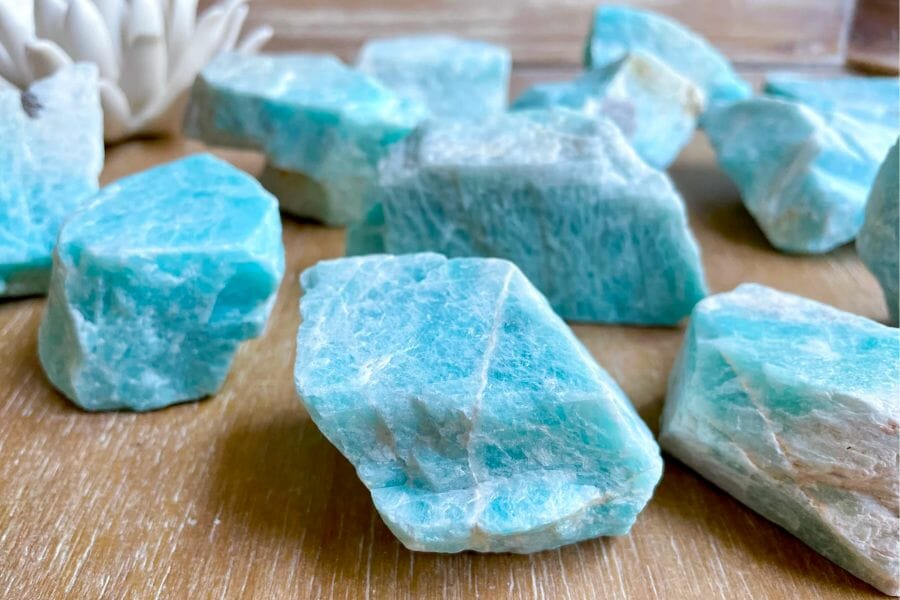
New Hampshire is a haven for crystal hunters, offering a wide variety of minerals and crystals that are truly a sight to behold. Our state’s abundance of mineral deposits makes it an ideal location for crystal hunting, and experienced collectors and enthusiasts flock to the area to explore its many crystal-rich locations. Here’s what you can find when you visit our state:
Rare crystals found in New Hampshire
- Amazonite
- Amethyst
- Lepidolite
- Rhodonite
- Topaz
More common crystals found here
- Apatite
- Aquamarine
- Calcite
- Chalcopyrite
- Epidote
- Fluorite
- Galena
- Garnet
- Jasper
- Malachite
- Muscovite
- Pyrite
- Quartz (Clear, Smoky, Rose, Rutilated)
- Tourmaline
What rough crystals look like
When you’re out looking for crystals on your own it’s important to know what you’re looking for. This is what you need to look out for:
Look for exteriors like this
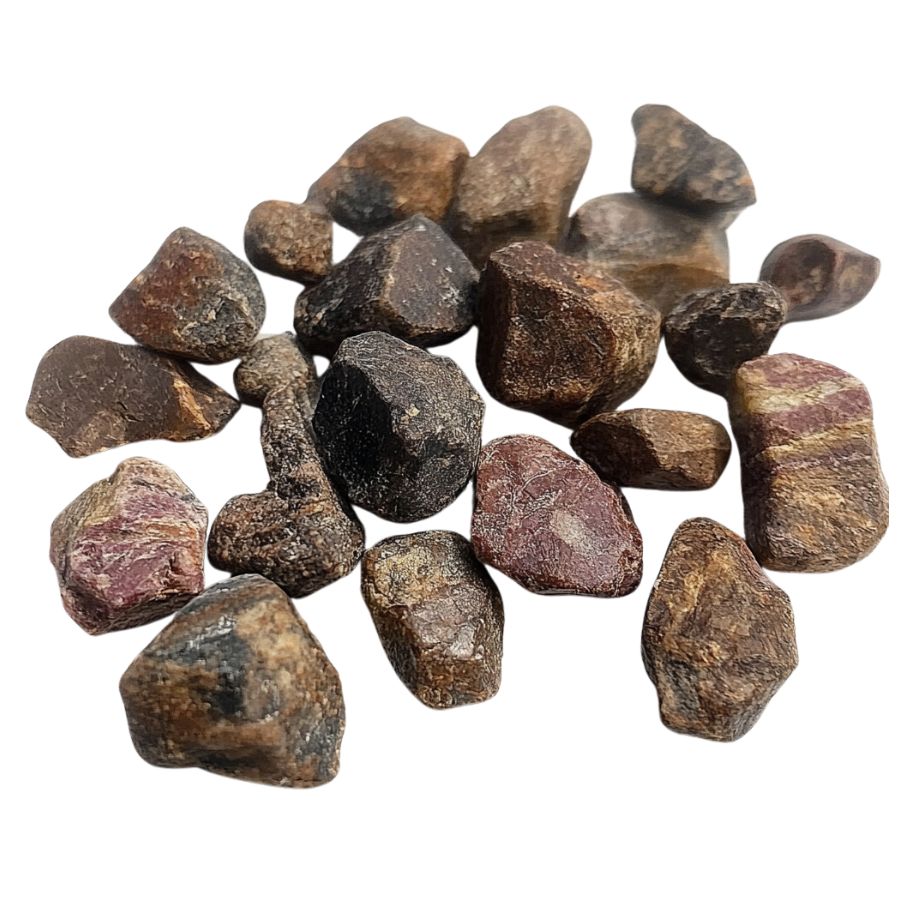
When you’re out searching for crystals in the wild, it’s essential to keep in mind that what you find won’t look like the polished stones you see in stores. One important tip is to consider what certain crystals look like in their raw, natural form.
Without the shine and smooth finish, crystals might appear rough, with jagged edges or earthy tones masking their true beauty. Understanding this can help you spot potential finds that might otherwise be overlooked.
Examine the crystal structure and shape
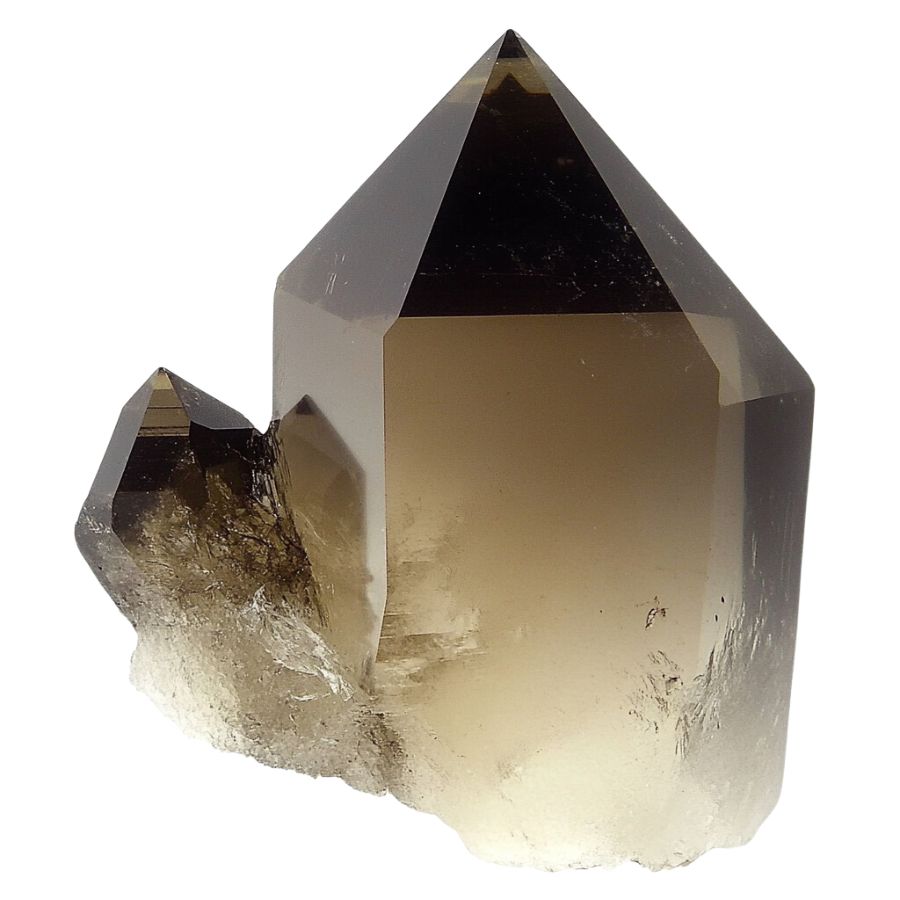
Crystals often form in specific geometric patterns that can be key to identifying them. For example, quartz is known for its hexagonal prisms, while halite typically forms cubic shapes.
By recognizing these distinct patterns, you can differentiate between various types of crystals and better understand what you’ve found.
Observe color
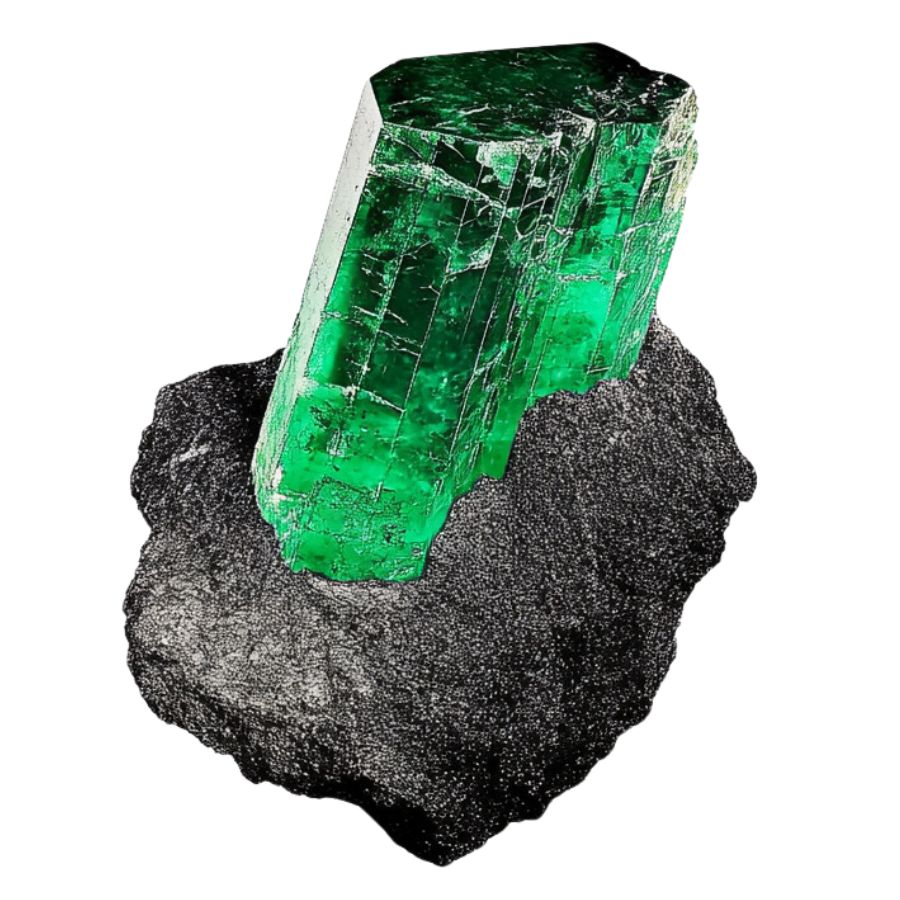
Some crystals are known for their distinct hues, like the deep purple of amethyst or the vibrant green of emerald. However, not all crystals will have strong colors; some may be clear or only slightly tinted.
Check the luster
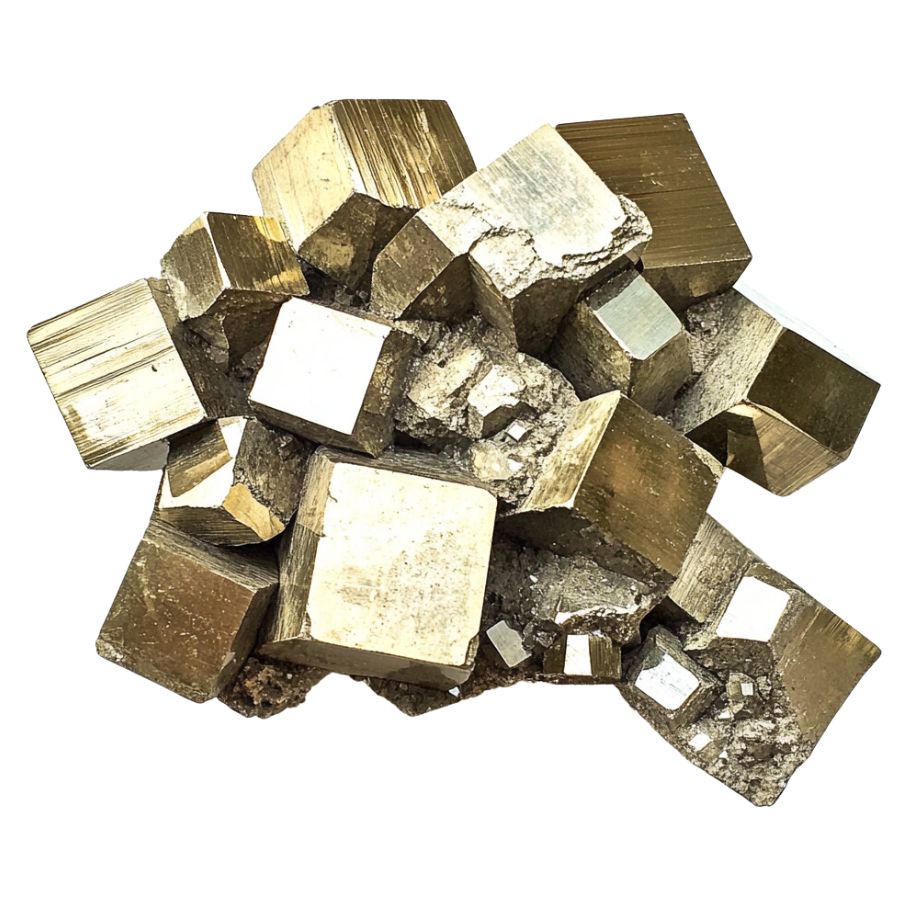
Luster refers to how a crystal’s surface interacts with light. Some crystals might have a shiny, glassy luster, while others may appear metallic or dull. This characteristic can help you determine the type of crystal you’ve found.
However, it’s important to remember that luster isn’t always obvious right away. In some cases, a crystal’s true luster will only become apparent after it’s been cleaned or polished, so keep this in mind as you examine your finds.
Evaluate the transparency
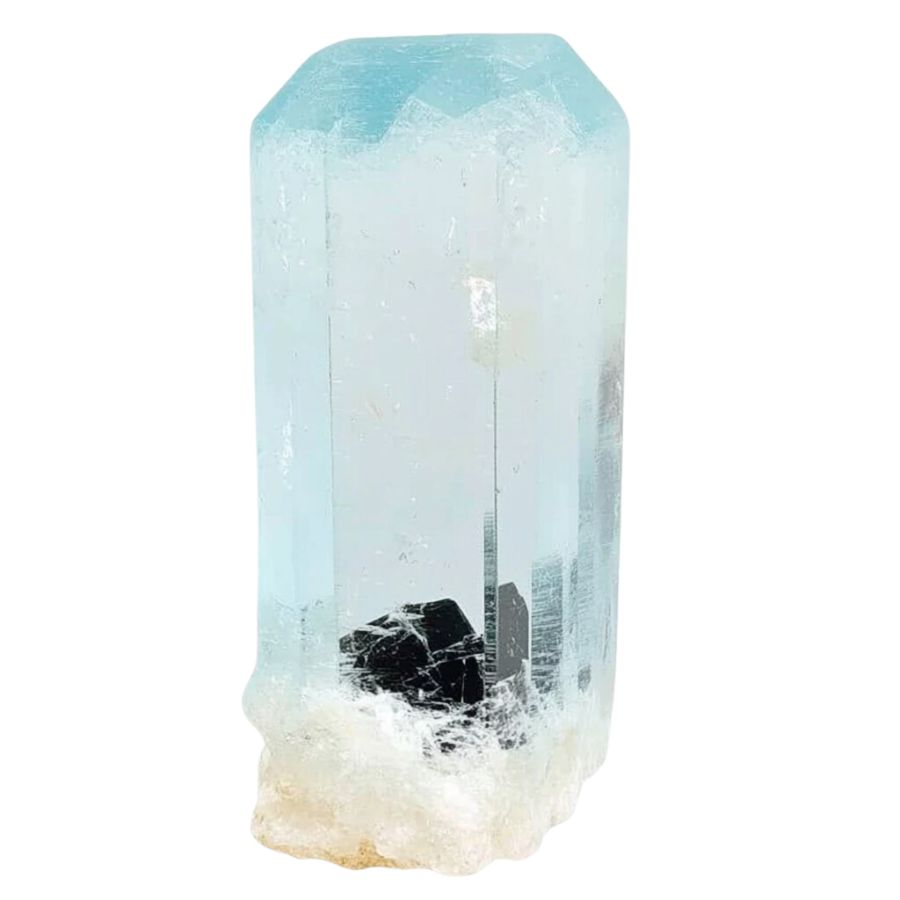
Pay close attention to how much light passes through the crystal. Some crystals are completely clear, allowing light to pass through easily, while others may be opaque and block light entirely.
You might also encounter crystals with translucent edges but opaque centers. These variations in transparency can offer valuable clues about the type of crystal you’ve found, making it easier to identify and appreciate your discovery.
A Quick Request About Collecting
Always Confirm Access and Collection Rules!
Before heading out to any of the locations on our list you need to confirm access requirements and collection rules for both public and private locations directly with the location. We haven’t personally verified every location and the access requirements and collection rules often change without notice.
Many of the locations we mention will not allow collecting but are still great places for those who love to find beautiful rocks and minerals in the wild without keeping them. We also can’t guarantee you will find anything in these locations since they are constantly changing.
Always get updated information directly from the source ahead of time to ensure responsible rockhounding. If you want even more current options it’s always a good idea to contact local rock and mineral clubs and groups
Tips on where to look
Having a better idea of where to look can greatly narrow down your search and increase your chances of finding crystals. By focusing on environments where crystals are likely to be exposed, you can spend less time searching and more time discovering.
Outcrops and Exposed Rock
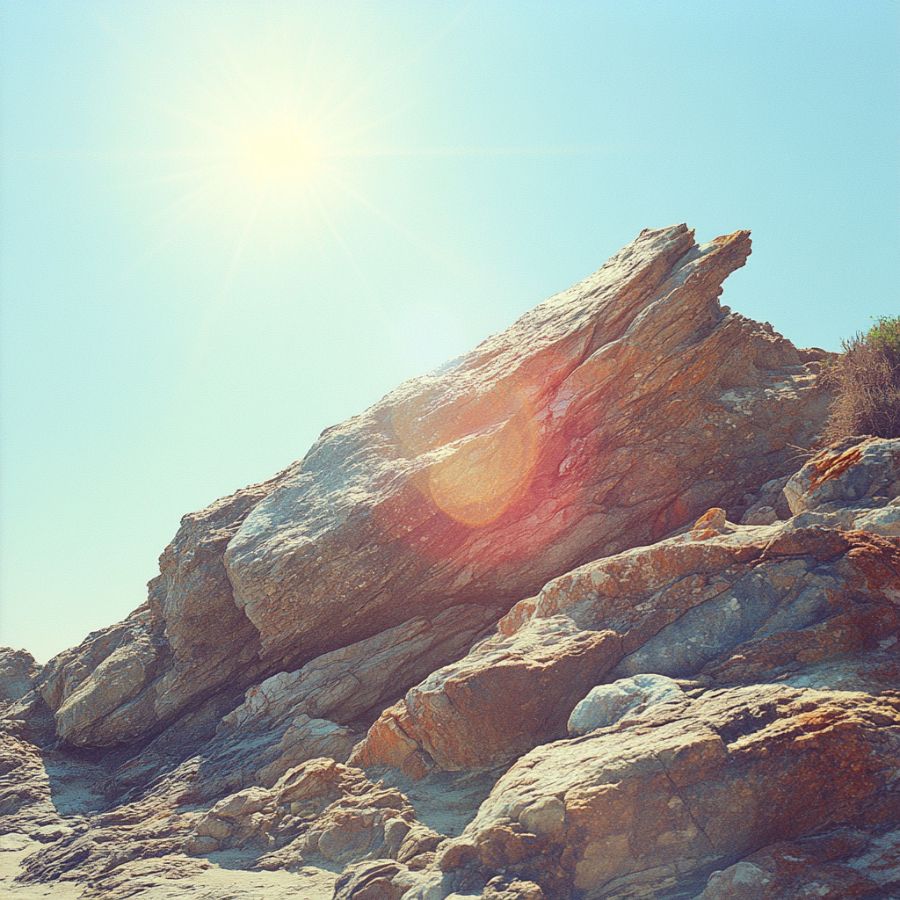
Rocky outcrops are prime locations for finding crystals and minerals. Search along the edges of outcrops, particularly where erosion has worn away the surrounding soil, revealing the rock underneath.
Pay close attention to any visible cracks, crevices, or small cavities within the outcrop, as these are often where crystals develop and can be extracted with minimal effort.
Stream Beds and Gravel Deposits
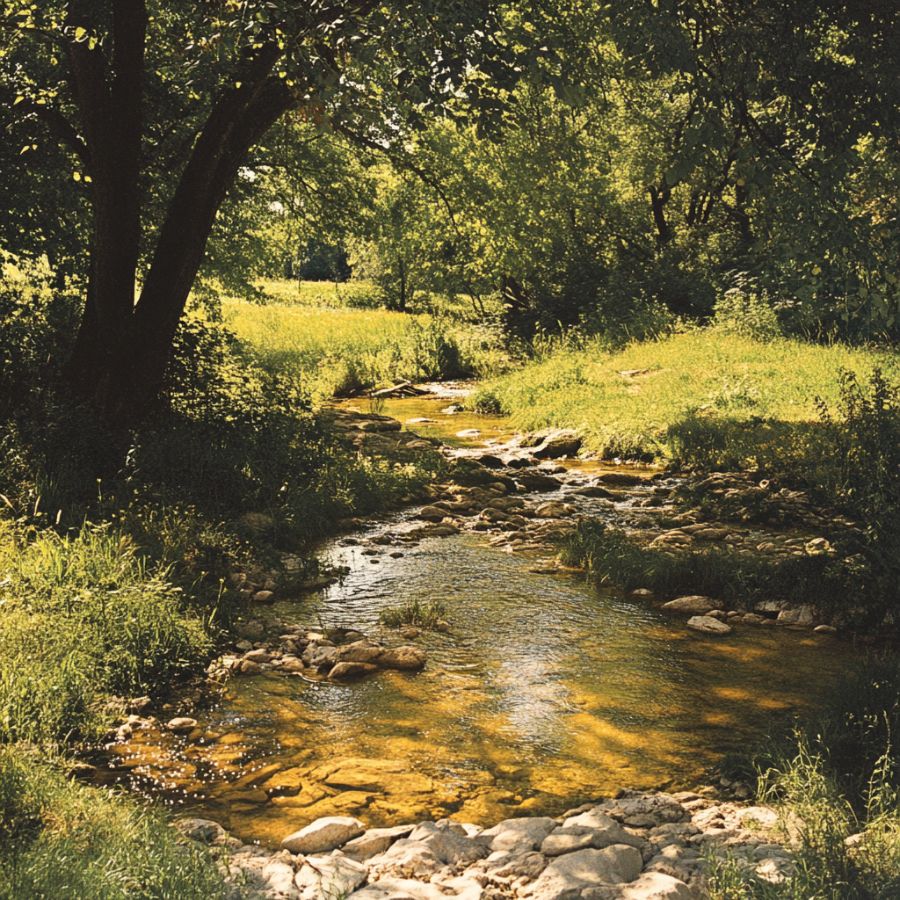
Stream beds are dynamic environments where water flow constantly shapes the landscape. Over time, water can erode rocks upstream, breaking them down and carrying mineral fragments, including crystals, downstream.
When searching in these areas, look for spots where the current has slowed, such as bends in the stream or areas behind large rocks, as these are prime locations for deposits.
Quarries and Mines
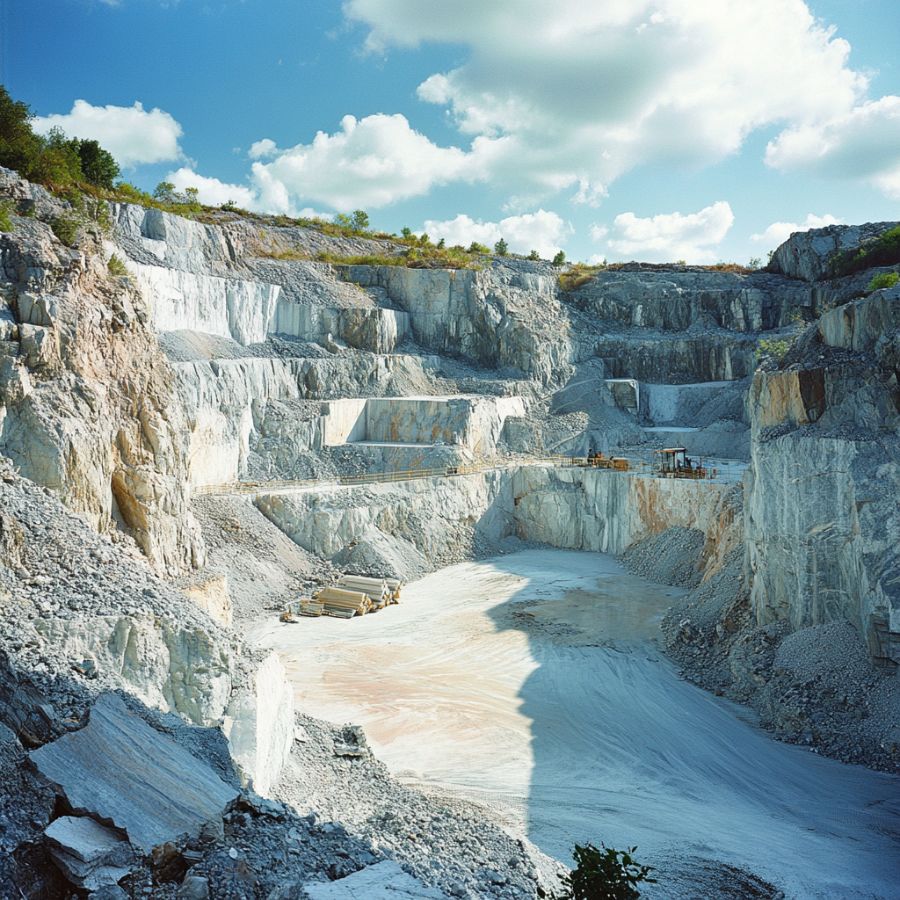
Quarries and mines are excellent places to search for crystals because they expose deep layers of rock that would otherwise be hidden beneath the surface. These sites often contain a variety of minerals and crystals that have been brought to the surface during excavation.
Pay attention to tailings piles, where waste rock is discarded, as they often contain overlooked or broken crystals. Always prioritize safety when exploring these areas and ensure that you have permission to search.
Road Cuts and Construction Sites
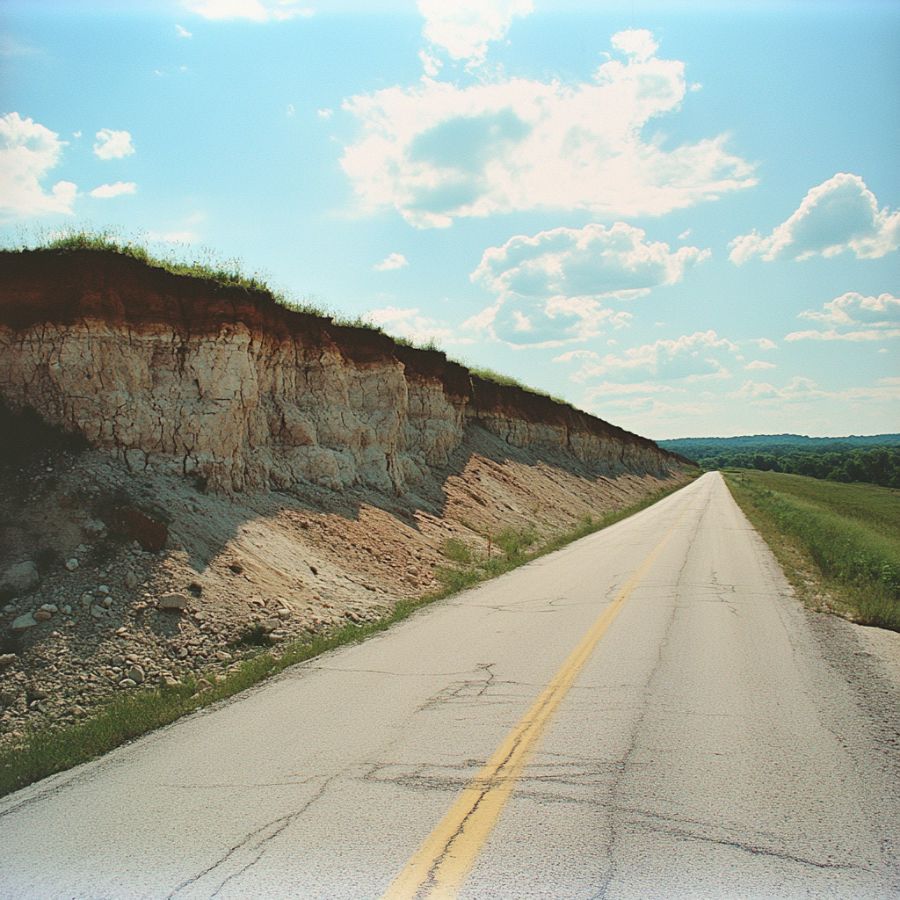
As roads are cut through hillsides or construction projects dig deep foundations, layers of rock and soil that have been undisturbed for millions of years are suddenly exposed.
Look for freshly exposed rock faces, especially where blasting has occurred, as this can create fissures or expose pockets filled with crystals. Be cautious around active construction sites, and always seek permission before exploring.
Mountainous Areas
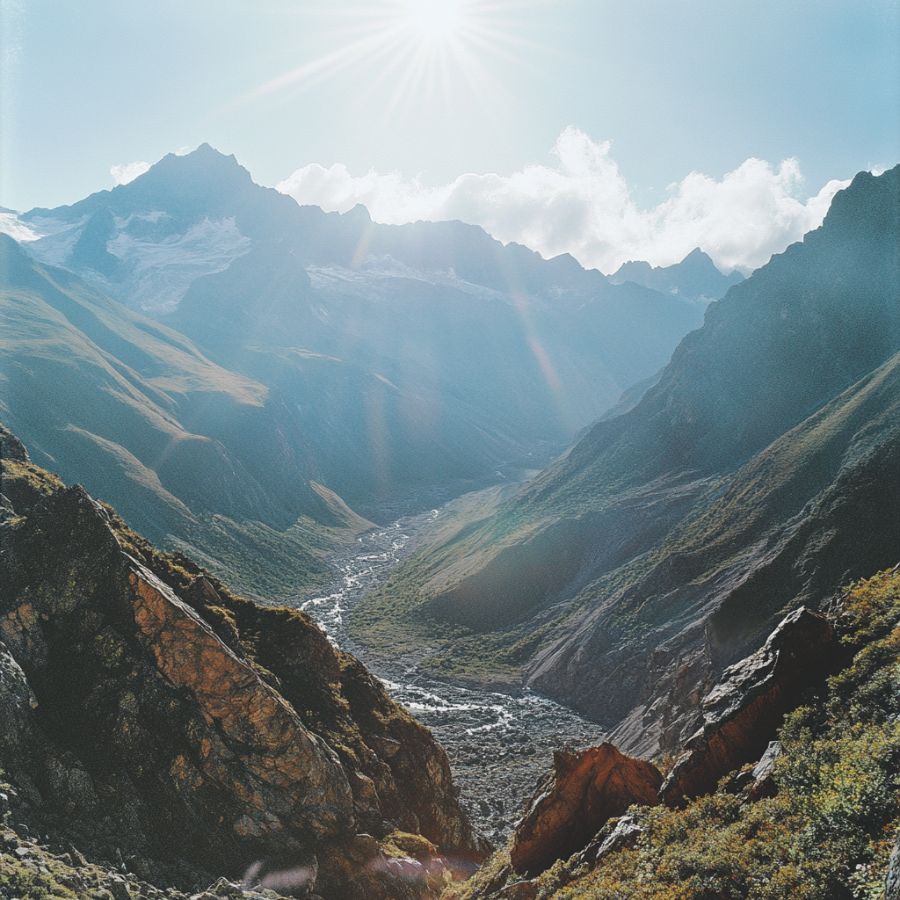
In mountainous regions, erosion caused by wind, rain, and ice can wear away the softer rock, exposing harder crystals that have formed within. Focus on weathered and broken rock formations.
Look for scree slopes, where loose rock has accumulated at the base of cliffs. Additionally, areas near fault lines or volcanic vents are particularly promising, as they often have a higher concentration of minerals.
DON'T MISS OUT ON ANY GREAT FINDS!
While you're out searching for Crystals you're going to find A LOT of other interesting rocks and minerals along the way. The last thing you want to do is toss out something really interesting or valuable. It can be easy to misidentify things without a little guidance.
We've put together a fantastic field guide that makes identifying 140 of the most interesting and valuable rocks and minerals you will find REALLY EASY. It's simple to use, really durable, and will allow you to identify just about any rock and mineral you come across. Make sure you bring it along on your hunt!
New Hampshire Crystal Mining Laws And Regulations
Crystal mining is legal in New Hampshire provided that you abide by our local laws concerning the activity, especially those from the New Hampshire Department of Environmental Services (NHDES).
Generally speaking, it’s always important to secure any necessary permit or permission before engaging in crystal mining. Also, with our rich resources, there are rules and regulations to protect our environment and wildlife, so you should be aware and compliant with these, too.
Overall, by respecting these laws and guidelines, you are helping ensure that crystal mining will remain legal in New Hampshire for years to come.
- The extensive local experience and understanding of our team
- Input from multiple local crystal hunters and crystal collecting groups
- The accessibility of the crystal mining locations
- Safety and potential hazards when collecting
- Private and public locations
- A desire to include locations for both experienced crystal hunters and those who are just starting out
Using these weights we think we’ve put together the best list out there for those who love finding new crystals for our collections!
The Best Locations For Crystal Mining in New Hampshire
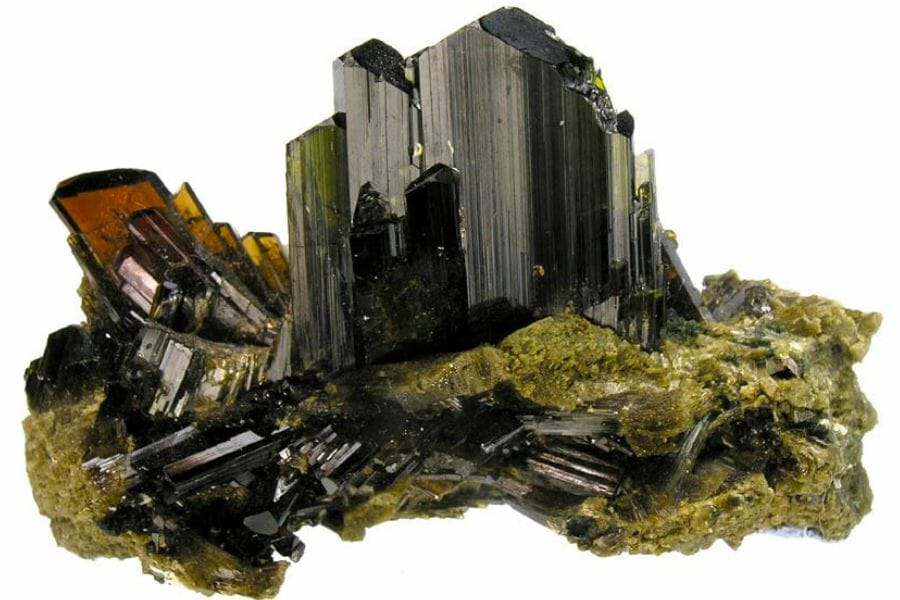
We had the best time and success exploring the following impressive spots, so we highly recommend putting them on top of your to-visit list when you’re crystal hunting here.
Always Confirm Access and Collection Rules!
Before heading out to any of the locations on our list you need to confirm access requirements and collection rules for both public and private locations directly with the location. We haven’t personally verified every location and the access requirements and collection rules often change without notice.
Many of the locations we mention will not allow collecting but are still great places for those who love to find beautiful rocks and minerals in the wild without keeping them. We also can’t guarantee you will find anything in these locations since they are constantly changing.
Always get updated information directly from the source ahead of time to ensure responsible rockhounding. If you want even more current options it’s always a good idea to contact local rock and mineral clubs and groups
Moat Mountain Mineral Site is Our Favorite Crystal Mine in New Hampshire
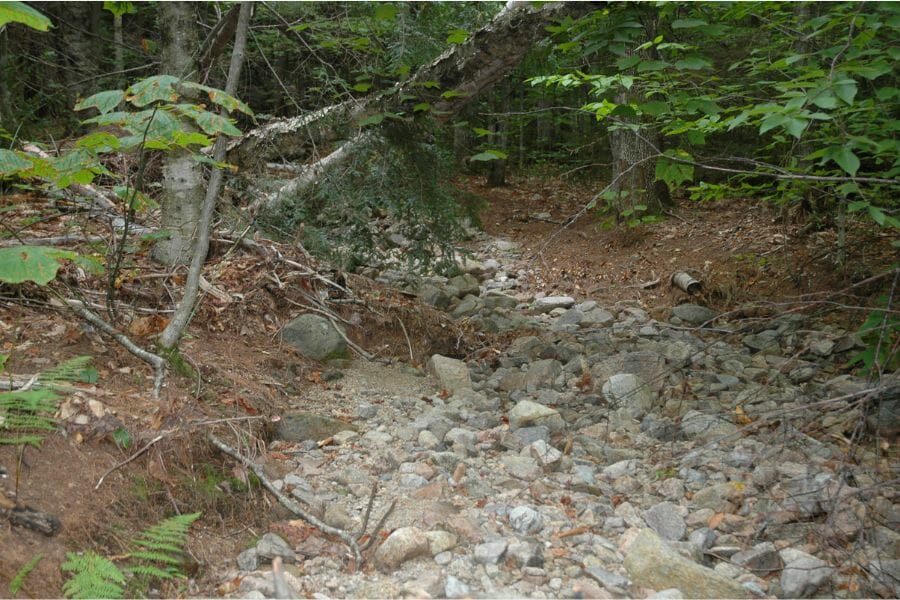
Carroll County, NH
Moat Mountain Mineral Site has a rich history dating back to the 1800s when it was a popular spot for mining mica. Today, it’s known for its abundance of the most beautiful crystals in our state. In fact, it’s also great site to find high-quality New Hampshire gems.
White Mountains, where this site is situated, are home to a variety of mineral deposits, including the pegmatite veins that can be found at Moat Mountain Mineral Site. These veins contain large crystals that are perfect for collectors.
One of the reasons Moat Mountain Mineral Site is such a great location for crystal hunting is that it’s accessible and easy to navigate. It’s located right off the main road and offers ample parking for visitors. From there, it’s just a short hike up the mountain to reach the crystal-rich areas.
Where we found crystals at Moat Mountain Mineral Site
Being a mineral site, Moat Mountain abounds in crystal reserves that can be found in its different parts. Some of the most abundant crystals that you can find here are Amazonite, Smoky Quartz, and Topaz.
DON'T MISS OUT ON ANY GREAT FINDS!
While you're out searching for Crystals you're going to find A LOT of other interesting rocks and minerals along the way. The last thing you want to do is toss out something really interesting or valuable. It can be easy to misidentify things without a little guidance.
We've put together a fantastic field guide that makes identifying 140 of the most interesting and valuable rocks and minerals you will find REALLY EASY. It's simple to use, really durable, and will allow you to identify just about any rock and mineral you come across. Make sure you bring it along on your hunt!
Pillsbury Ridge
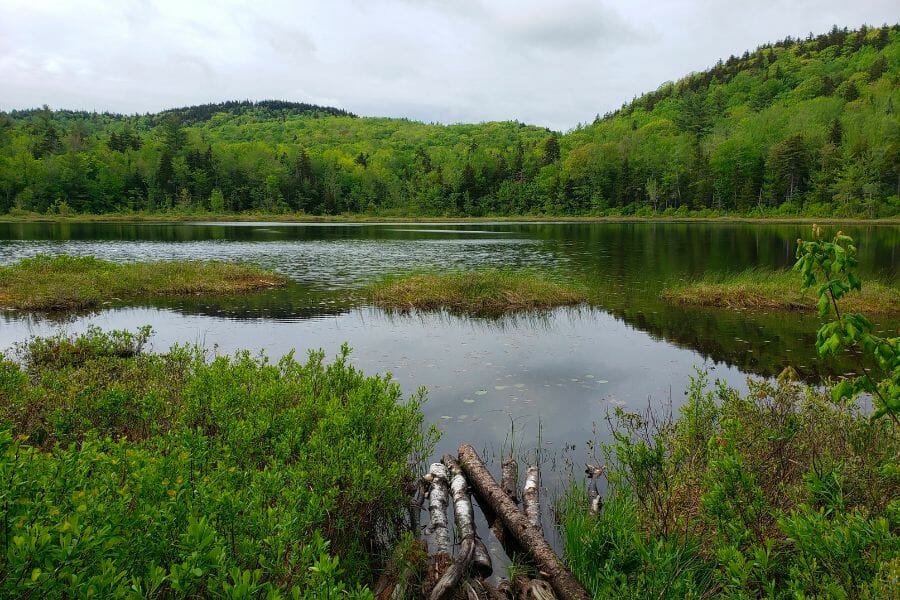
Sullivan County, NH
Pillsbury Ridge has a rich history dating back to the 1800s, when it was a popular spot for mining mica. Today, it’s known for its abundance of pretty crystals.
The geology of the area is what makes it such a prime location for crystal hunting. The Pillsbury Ridge area is situated on a large pegmatite deposit, which means that there is a high concentration of large crystals to be found. The geology of the area has also led to the formation of unique and beautiful crystals that are not commonly found in other locations.
One of the reasons Pillsbury Ridge is such a great location for crystal hunting is that it is accessible and easy to navigate. The site is located just off Route 31 and offers ample parking for visitors. From there, it’s just a short hike up the ridge to reach the crystal-rich areas.
During your search here, you’ll find that some of the more common crystals can be very easy to confuse. If you’re having this problem, you can refer to the few guides we’ve put together to tell specific crystals apart:
Where we found crystals at Pillsbury Ridge
You can explore near the summit of Pillsbury Ridge and at the Columbia and Reynolds mines to find stunning samples of Amethyst, Aquamarine, and Smoky Quartz crystals.
Read our latest pricing guide to know how much crystals are worth.
Greens Ledge

Coos County, NH
Located in the picturesque town of Harrisville, Greens Ledge’s history dates back to the 1700s when it was a popular spot for mining feldspar.
Greens Ledge is situated on a large pegmatite deposit, which means that there is a high concentration of large crystals to be found. The geology of the area has also led to the formation of unique and beautiful crystals.
One of the reasons it’s such a great location for crystal hunting is that it’s relatively untouched and offers a sense of adventure for rockhounds. The site is located on private property, but with permission from the landowner, visitors are welcome to explore the area in search of crystals.
Where we found crystals at Greens Ledge
When you visit here, search through the area pegmatite exposures near Milan. Here, you will find Amethyst, Fluorite, Muscovite, Pyrite, Clear and Smoky Quartz, and Topaz crystals.
Hutchin Mountains
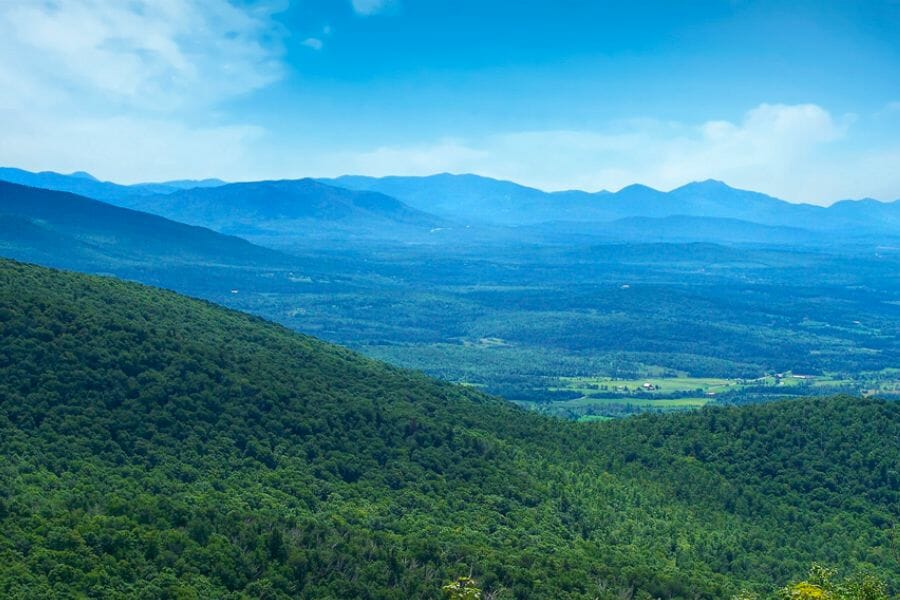
Coos County, NH
Hutchin Mountains is a must-visit for anyone interested in finding and collecting crystals in New Hampshire. Located in the town of Orford, these mountains have a rich history dating back to the early 1900s when they were a popular spot for mining mica.
Hutchin Mountains are part of the Littleton Formation, which is a large series of rock formations that were formed millions of years ago by volcanic activity. The resulting metamorphic rocks have created a variety of unique and stunning crystals that are not commonly found in other locations.
When you visit here, it’s important to bring along the right gear. Sturdy hiking boots and a backpack are a must, as well as tools such as a rock hammer and chisel. It’s also important to respect the environment by not damaging the landscape and leaving behind any trash.
Where we found crystals at Hutchin Mountains
Explore the different nooks and crannies of Hutchin Mountains and you might get lucky to find the following crystals: Amethyst, Fluorite, Muscovite, Pyrite, Smoky Quartz, and Topaz.
Ore Hill
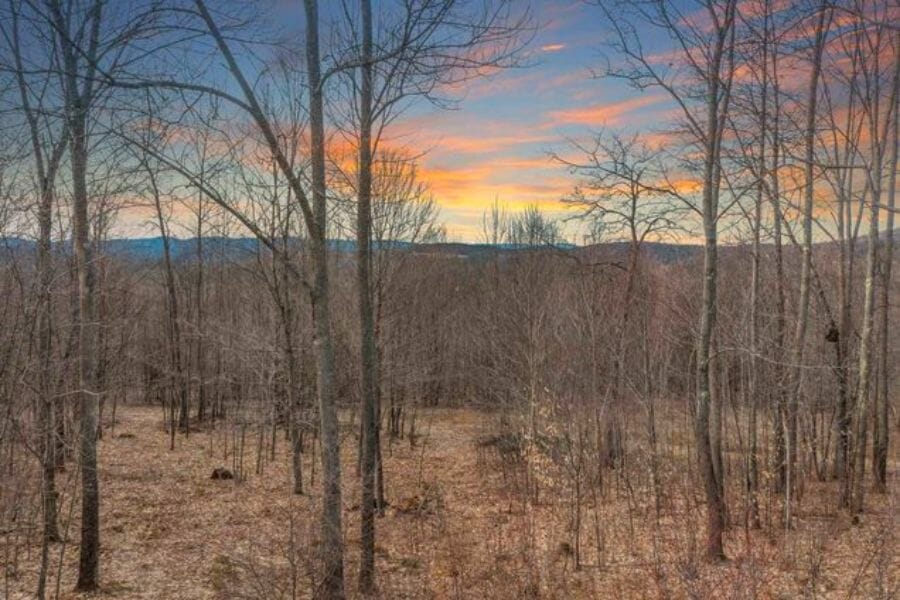
Grafton County, NH
Back in 1800s, miners would dig for iron ore in Ore Hill, giving it its name. While iron mining has long since ceased, the hill remains a prime location for rockhounding.
Like the Hutchin Mountains, Ore Hill is part of the Littleton Formation, which explains its abundant crystal reserves. You can bask in a rich variety of crystals when you go here.
Ore Hill is also an ideal location for crystal hunting because of its accessibility. Since it’s located on public land, you are welcome to explore the area. The terrain is relatively easy to navigate, making it a great spot for families and beginner rockhounds.
Where we found crystals at Ore Hill
We recommend starting your search on the south side of the hill, area surfaces, and in topsoil where you can find Amethyst and Quartz crystals, among others.
Our Other Favorite Places For Crystal Hunting
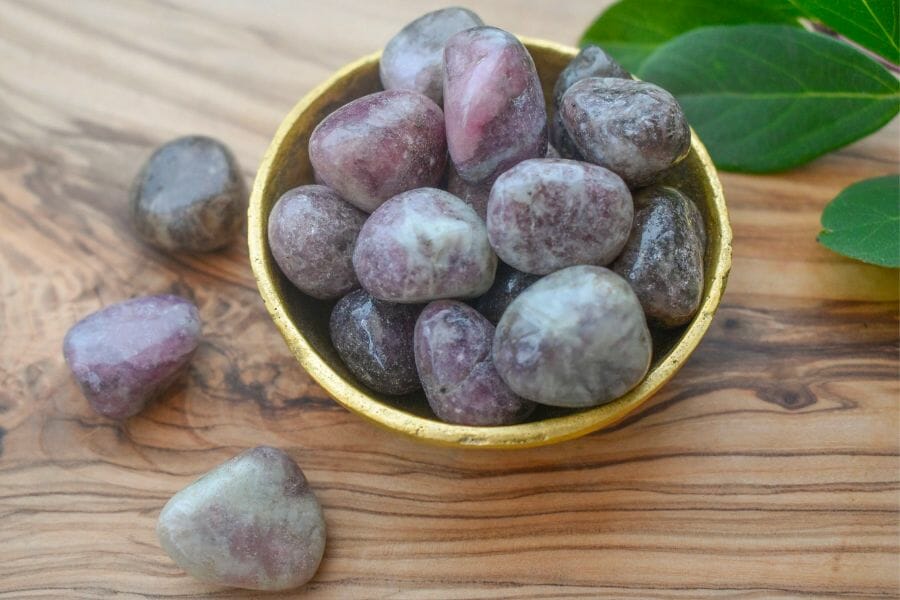
Aside from the 5 most impressive spots that we’ve shared above, there are plenty other crystal hunting sites here. After all, New Hampshire is considered a treasure trove of crystals. What’s even better is that many of the places we’re sharing with you are great spots to find New Hampshire geodes, too.
Where you can find crystals for free in New Hampshire
If you’re keeping your crystal mining hobby on a budget, here are some of the free-to-search places that you can visit.
| County | Location |
| Carroll | At the Redstone Red Quarry |
| Coos | At Victors Head in Percy area |
| Hillsborough | At the Kittridge, Carlton, and Cannoli Granite Quarries |
| Strafford | The old Bliven prospect |
| Sullivan | At Youngs Hill |
Other great places to dig for crystals
If you don’t mind paying a fee for a better chance of finding your desired crystals, here are the pay-to-dig site here. Remember, the fees may vary depending on the season, so it’s crucial to call the place first before heading out.
| County | Location |
| Belknap | Alton area mines |
| Cheshire | At the Wenham Mine, Fitzgibbon Mine, Turner Mine, Windham Mine, Will Wise Mine, and Stoddard Mine |
| Grafton | At the Ruggles Mine (a noted producer) |
| Merrimack | At the Silverdale Mine |
| Rockingham | At Blake Mine, Chandler Mine, Smith Mine, and Welch Mine |
| Strafford | At the Foss Mica Mine and Parker Mountain Mine |
| Sullivan | At the Globe Mine Dump, Columbia Gem Mine, Reynolds Mine, and mine dump at Beryl Mountain |
The Best Crystal Shops In New Hampshire

If you want a more comfortable and surer way of taking home a New Hampshire crystal (for a fee, of course), you can visit the local crystals shop here. These shops have the best selections of crystals in their show room:
- The Quartz Source Rock & Mineral Shop – 503 Nashua St, Milford, NH 03055
- Artisan Crystal and Gift Shop – 255 B Portsmouth Ave, Stratham, NH 03885
- Crystal Moon – 502 US-4, Enfield, NH 03748
- Amy’s Crystal Creations – 120 Laconia Rd #302, Tilton, NH 03276
- A Broader Concept – 143 Londonderry Turnpike, Hooksett, NH 03106
- The Dragon’s Keep – 401 Main St #206, Salem, NH 03079
- Gemstar Gemstone Company – 427 Shaker Blvd, Enfield, NH 03748
- Santerre’s Stones ’n Stuff – 275 Calef Hwy, Epping, NH 03042
- The Bohemian – 50 S Willow St Unit 9, Manchester, NH 03103
- AliCat Jewels – 99 Rockingham Park Blvd, Salem, NH 03079
Additional places to find crystals in nearby states
If you’ve already tried all of our recommendations above or are planning a trip out of the state, you should check out our guides for neighboring states:
If you have any recommendations we haven’t covered, please leave them in the comments below!

